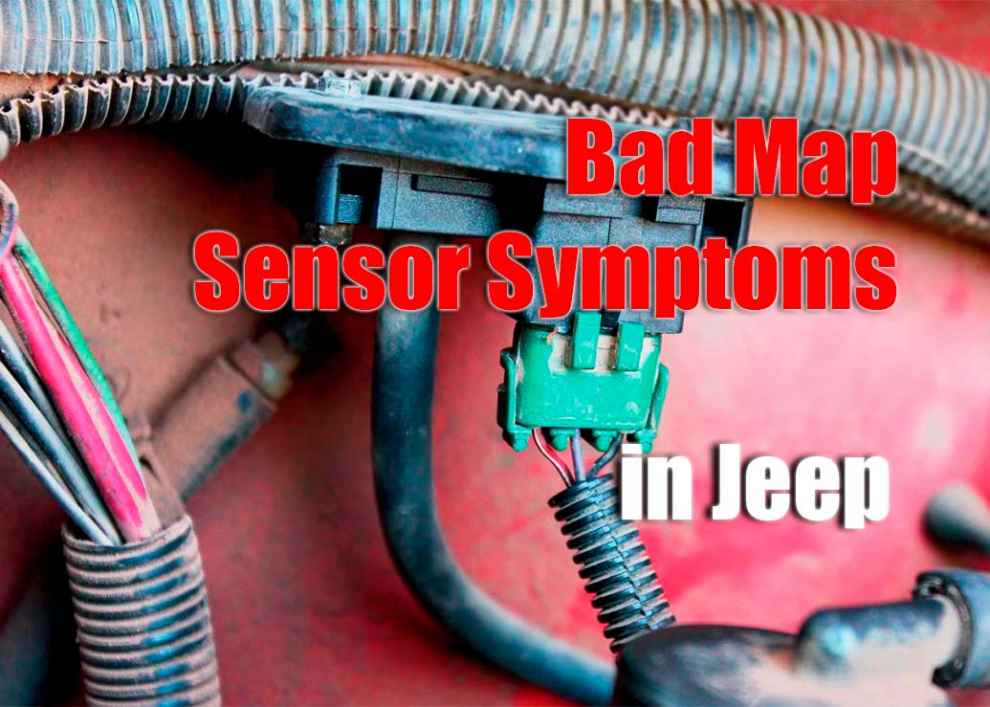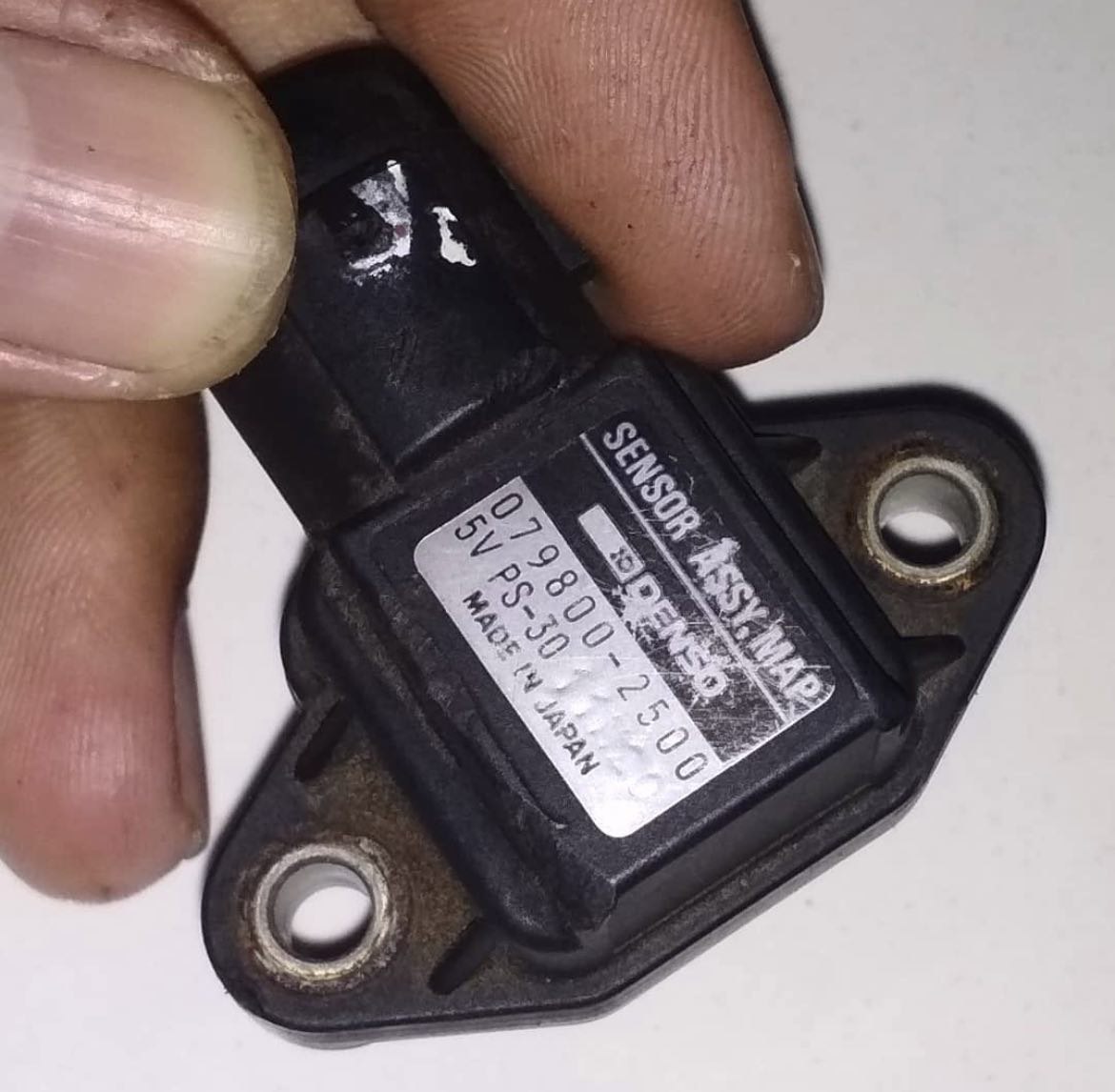If you’re driving a Jeep, it’s important to know how to diagnose and repair bad map sensor symptoms. The map sensor, or manifold absolute pressure (MAP) sensor, is essential to the vehicle’s computerized fuel injection system. If this component fails or malfunctions, it can cause various symptoms ranging from decreased performance to poor fuel economy and engine failure. In this article, we will discuss what a MAP sensor is, bad map sensor symptoms in Jeeps, and provide a guide on how to diagnose and fix a bad one in your car so that you can get back on the road as soon as possible.
What Is a MAP Sensor?
A MAP (Manifold Absolute Pressure) sensor in a Jeep, or any other vehicle, is a crucial component that helps determine the engine’s load by measuring the amount of pressure in the intake manifold. This information is used by the Engine Control Unit (ECU) to calculate the optimal fuel mixture and ignition timing for efficient combustion. The MAP sensor effectively monitors the differences in pressure between the outside atmosphere and the intake manifold, allowing the ECU to adjust the air-fuel ratio according to the changing driving conditions. In a Jeep, which may often be driven in off-road or rugged environments, a properly functioning MAP sensor is vital to maintain performance, fuel efficiency, and overall engine health. Failure of the MAP sensor can lead to symptoms like poor fuel economy, hesitation, or even stalling of the engine. When aiming to enhance your engine’s efficiency, consider referencing the Best Jeep 4.0 Header for expert recommendations.
Common Symptoms of a Failing MAP Sensor in Jeep
A failing MAP sensor in your Jeep can lead to various issues, including poor engine performance, decreased fuel economy, and even damage to other components. Common symptoms of a failing MAP sensor in your Jeep include:
-
Poor idling: A faulty MAP sensor can cause the fuel injectors to open and close erratically, resulting in rough idling that may worsen as the engine warms.
-
Hesitation or stumbling upon acceleration: If your Jeep hesitates when you press the accelerator or stumbles upon acceleration even after warm-up, it could indicate a bad MAP sensor.
-
Check engine light on: The check engine light will often come on if there’s an issue with the MAP sensor. It is usually accompanied by trouble codes that help identify exactly what type of failure has occurred with your MAP sensor.
-
Reduced fuel economy: Failing MAP sensors can cause your Jeep to run rich – meaning it’s using more fuel than necessary – resulting in reduced gas mileage and elevated emissions levels.
-
Engine performance issues: Poor performance is one of the most notable symptoms of a bad MAP sensor. If the MAP sensor is not accurately sending information to the ECU, your Jeep may experience reduced power, power surges, and acceleration issues.
If you suspect a failing MAP sensor in your Jeep, you must have it inspected and replaced as soon as possible before any further damage can occur.
How to Diagnose and Fix a Bad MAP Sensor
To diagnose a bad MAP sensor in your Jeep, check the electrical connections to ensure the connector is plugged in correctly. If not, you can fix it simply by re-seating the plug. If that doesn’t work, you can use an OBD scan tool or a multimeter to check for voltage and continuity at the MAP sensor. You can also check for vacuum leaks around the intake manifold, if any are present, as this can cause problems with MAP sensors.
Once you have diagnosed the bad map sensor in your Jeep, it’s time to replace it with a new one. This job is straightforward and involves unplugging the old MAP sensor and replacing it with a new one of the same type (there are various types of sensors used in Jeeps). It’s essential to use only genuine manufacturer parts when replacing your MAP sensor so that it fits properly and works correctly. Once installed, ensure all electrical connections are properly secured before starting your engine back up – this will help ensure that everything performs as expected once you hit the road again!
Conclusion
Knowing how to diagnose and repair bad map sensor symptoms in Jeeps is essential for keeping these vehicles running smoothly and efficiently on all terrain. The most common symptoms of a failing map sensor include poor idling, hesitation or stumbling upon acceleration, an illuminated check engine light on the dashboard display, reduced fuel economy, and engine performance issues like decreased power or acceleration problems. Before beginning any repairs on your Jeep’s map sensor system, confirm that this is where the problem lies by using an OBD scan tool or multimeter; then, replace any faulty components with genuine factory parts. With proper diagnosis and maintenance of these key components of your vehicle’s fuel injection system, you can enjoy worry-free driving both on-road and off!

 Poor idling: A faulty MAP sensor can cause the fuel injectors to open and close erratically, resulting in rough idling that may worsen as the engine warms.
Poor idling: A faulty MAP sensor can cause the fuel injectors to open and close erratically, resulting in rough idling that may worsen as the engine warms.
Add Comment